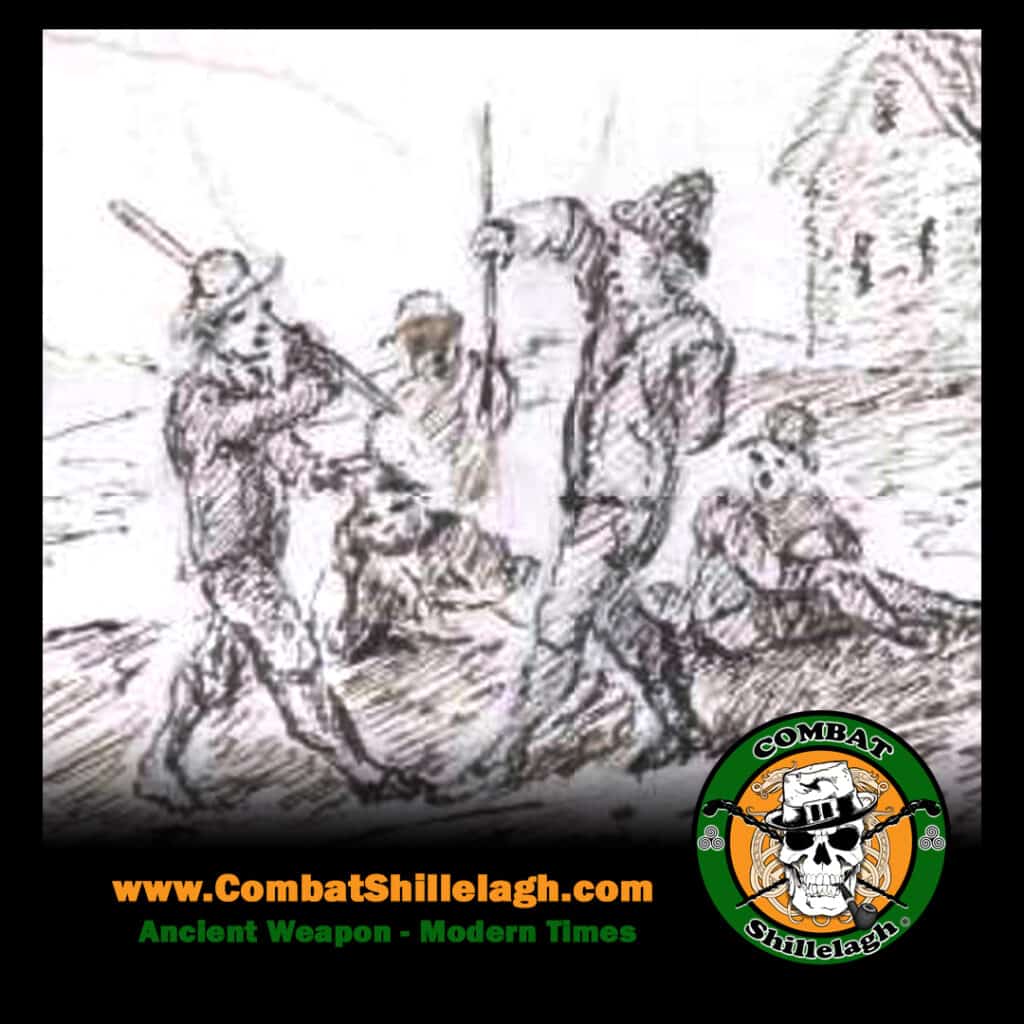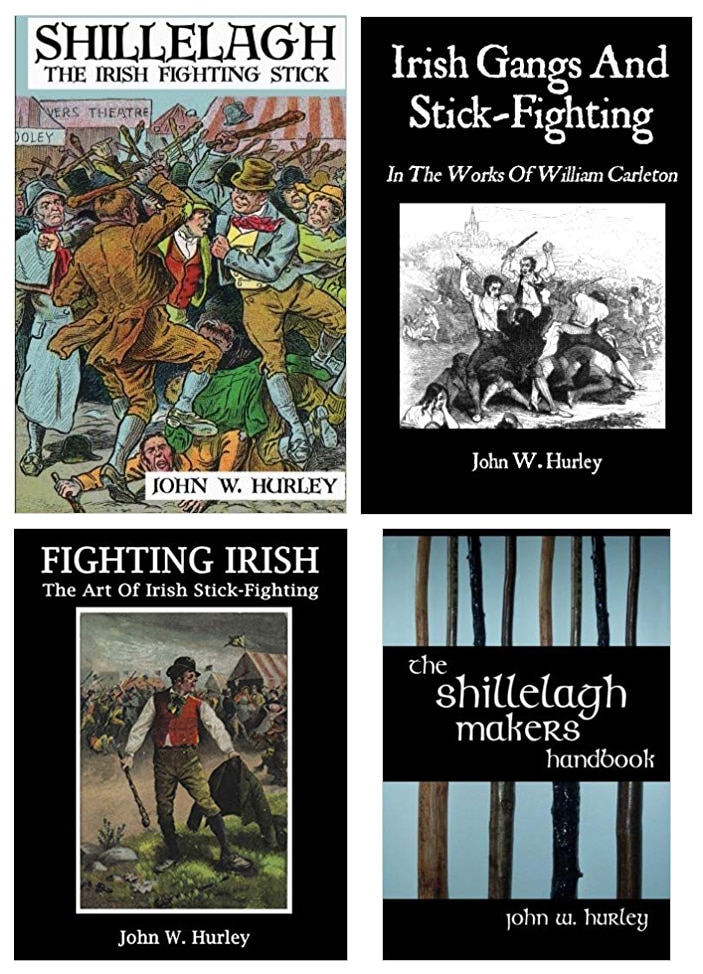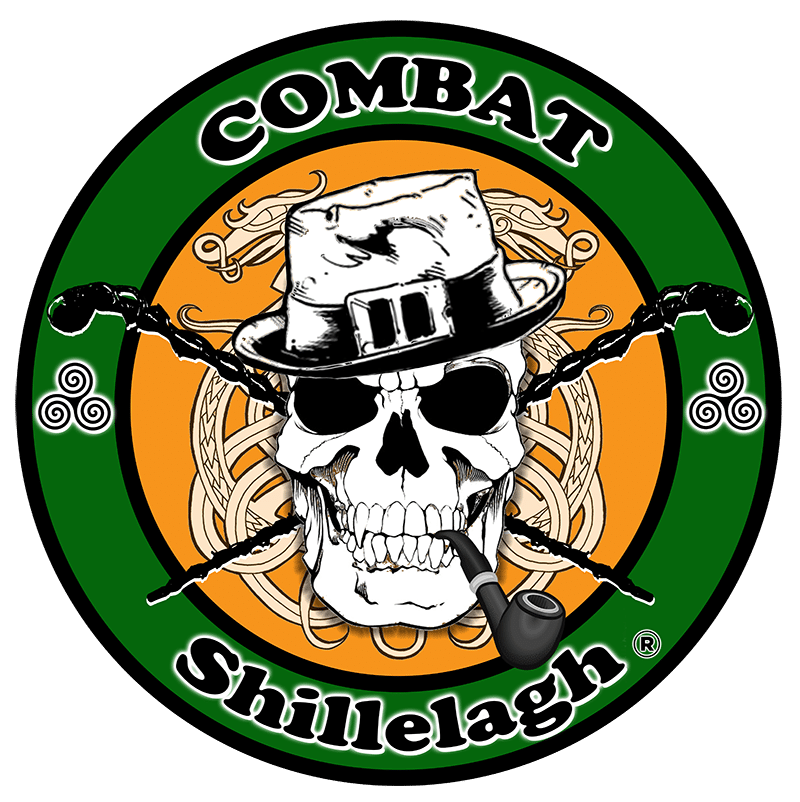Irish stick fighting, a unique and storied martial art, is deeply rooted in Ireland’s history and culture. Its origins are often connected to the use of the shillelagh (pronounced “sheleighly” or “shalalay”), a traditional wooden walking stick, often made from blackthorn wood. This essay explores the history of Irish stick fighting, the significance of the shillelagh, and the role of faction fights in this martial tradition.

Origins and Development
Irish stick fighting, or “bataireacht” in Gaelic, dates back centuries. It evolved from a need for self-defense and as a means of settling disputes in a largely rural and often lawless Ireland. The shillelagh, a stout, knobby stick, became the weapon of choice, not just because of its availability but also due to the British disarmament laws which prohibited the Irish from carrying swords.
The shillelagh, typically made from blackthorn wood, was prized for its toughness and natural knobby formations, which added to its effectiveness as a weapon. Blackthorn, a native Irish plant, was readily available, and its wood’s natural properties made it ideal for crafting durable walking sticks that doubled as covert weapons.
Techniques and Styles
Irish stick fighting is characterized by its practicality and effectiveness. Unlike some martial arts that emphasize form and ritual, bataireacht was developed for real-world combat situations. The techniques included a mix of strikes, blocks, and even grappling, making it a versatile form of self-defense.
Different styles of Irish stick fighting evolved, often varying from county to county or even village to village. Some styles were more defensive, focusing on blocking and countering, while others were more aggressive. These regional styles contributed to a rich tapestry of techniques and approaches within the art.
Now, here at Combat Shillelagh we offer a modern-day way to learn Irish Stick Fighting based upon our own decades of Shillelagh, staff, blade and empty hand martial arts studies. Our system is one of the most well-documented and well-rounded Irish Stick Fighting systems available today.
There are a few styles other than ours that exist (Doyle & Antrim for example), however it is difficult to ascertain the exact origins of those systems and styles due to lack of historical documentation. This lack of historical documentation is most likely due to multiple factors, not the least of which is that Irish Martial Arts has typically been a verbal tradition handed down by word of mouth and father to son etc.
As with anything, these other styles should be viewed through the lens of actual practical usefulness, quality of the material, quality and methods of instruction and applicability to modern times. We support the overall Irish Stick Fighting community and are proud of our own unique place within it.
Faction Fights
Faction fights, a notorious aspect of 18th and 19th-century Irish life, were large brawls between rival groups or families, often occurring at fairs or public gatherings. These fights were sometimes spontaneous, but often they were arranged and ritualized. The shillelagh was the weapon of choice in these conflicts, and skilled fighters were held in high regard.
These faction fights played a significant role in the development and perpetuation of Irish stick fighting techniques. They provided a real-world arena where fighters could test and refine their skills. Unfortunately, these fights also contributed to a perception of violence and lawlessness in Irish culture, which led to a decline in the tradition.
Decline and Revival
By the late 19th and early 20th centuries, faction fights began to wane, partly due to increased policing and social change. As these fights declined, so too did the practice of Irish stick fighting. For many years, the concepts of Irish Stick Fighting was at risk of being lost entirely.
However, in recent decades, there has been a revival of interest in Irish stick fighting. Martial arts enthusiasts and cultural historians have worked to research, document, and teach the techniques of this unique fighting style. Today, it is practiced both as a martial art and as a way to connect with Irish heritage.
We are proud to be a part of that revival as we bring Irish Stick Fighting into the 21st century!
Irish stick fighting, with its roots in the practical use of the shillelagh, is a fascinating blend of martial art, cultural history, and social practice. Its evolution from a form of self-defense to a symbol of factional rivalry, and its recent revival, reflects the dynamic nature of martial arts as both a practical skill and a cultural artifact. This art form not only offers insights into Ireland’s past but also continues to be a relevant and engaging practice today.
Reference Material and Books
Unlike Eastern Martial Arts, there are very few sources of documentation. Most sources are second hand from press and newspapers of the time, or can be found in a few rare books on the subject. One of the experts in the historical aspects of Faction Fighting and the Shillelagh is John Hurley.

Self Defense Applications of the Shillelagh (Blackthorn Walking Stick and Cudgel)
A walking stick length Shillelagh is a very practical and very effective self-defense tool. In the Combat Shillelagh System, we teach not only techniques and applications of the walking stick length Shillelagh, but also the Cudgel, Double Cudgel, Shillelagh and Cudgel, Shillelagh and Blade, Cudgel and Blade as well as empty hands.
In Nonpermissive environments, a cane length walking stick such as the Shillelagh is a great low key, unobtrusive choice. In the US, laws regarding personal medical devices offer some cover to the idea of carrying a Shillelagh with you as an assisting device. As with anything, there are caveats to both what you carry, where you carry it, and the makeup of the item you are carrying.
Our YouTube Channel (available here: https://www.youtube.com/@combatshillelagh) we have hundreds of examples of videos showing self defense applications. It is important to note, that the video clips are not full speed sparring, rather they are designed to be instructional (didactic – designed or intended to teach, intended to convey instruction and information as well as pleasure and entertainment).
Join us and start your Irish Stick Fighting Journey Today!
You can check out our distance learning programs and student bundles here: Distance Learning Courses – Combat Shillelagh
